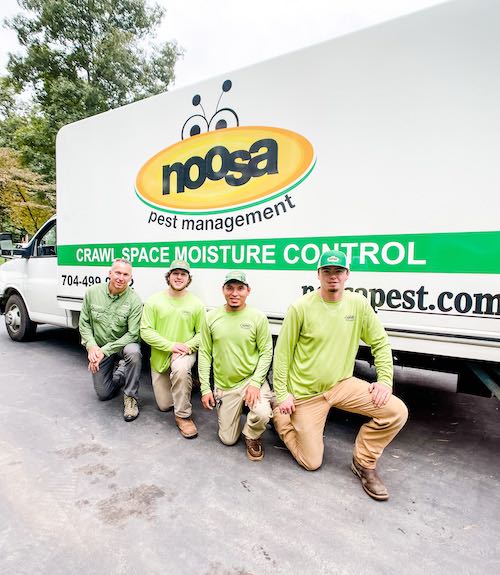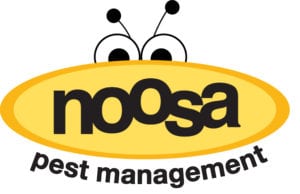Moisture Control in Crawl Spaces: Why Encapsulation is Crucial for Pest Prevention

If you are a homeowner with a crawl space, you are probably no stranger to the problems that can arise from excess moisture in these areas. Moisture problems can lead to a variety of issues, from mold and mildew growth to structural damage. However, one of the biggest concerns for many homeowners is pests. A damp crawl space can be a beacon for a host of unwanted visitors, from termites and ants to mice and rats. Fortunately, there is a solution to this problem: crawl space encapsulation.
In this article, we will explain what crawl space encapsulation is, why it’s important for preventing pests, and what steps you can take to ensure your crawl space is properly sealed.
What is Crawl Space Encapsulation?
Crawl space encapsulation involves sealing off the crawl space from the outside environment, creating a controlled interior space. This is typically accomplished by installing a crawl space vapor barrier or moisture barrier, which is essentially a thick plastic sheet that covers the entire floor and walls of the crawl space. The barrier is usually secured using either mechanical fasteners or adhesive, depending on the specific installation. The objective of crawl space encapsulation is to separate the crawl space from the outside atmosphere by reducing the amount of moisture and humidity that enters the space, ultimately improving the overall air quality of your home.
Why is Encapsulation Important for Preventing Pests?
Excess moisture in your crawl space is one of the biggest draws for pests. Many pests, from rodents and termites to spiders and cockroaches, are attracted to damp environments. By encapsulating your crawl space, you create a barrier that keeps unwanted critters out of your home. A sealed crawl space is not only less attractive to pests, but it also makes it much more difficult for them to enter your home.
How Crawl Space Encapsulation Works
- The process of sealing a crawl space, or encapsulation, begins with a thorough inspection and cleaning of the area. Debris, such as old insulation or rodent droppings, are removed.
- If any mold remediation is required, a mold cleaning solutions is used to clean and remove fungal growth
- Next, any existing cracks or openings in the crawl space are sealed using a foam-based sealant.
- Once the area is prepped, a heavy-duty polyethylene barrier is used to cover the floor and walls of the crawl space. The barrier is carefully cut and installed to fit snugly against all surfaces, and is typically secured with mechanical fasteners or adhesive. Seams are sealed using a special tape to ensure an airtight fit.
- After the barrier is in place, a dehumidifier is sometimes installed to manage any residual moisture in the air, thus ensuring a dry, pest-resistant environment.
What Steps Can You Take to Ensure Your Crawl Space is Properly Sealed?
First, you should have your crawl space inspected by a professional to determine if it needs to be sealed. A professional will be able to assess the current condition of your crawl space and determine if there are any issues that need to be addressed. Once you have determined that encapsulation is necessary, you should choose a vapor barrier that is appropriate for your crawl space. There are many different materials and options available, so it’s important to work with a professional who can guide you through the process.
Lastly, ensure the vapor barrier is properly installed, ideally by a professional, to avoid any installation errors that may create additional issues.
Types of Crawl Space Vapor Barriers
Vapor barriers come in a variety of materials, each having its own strengths and weaknesses.
- Polyethylene Sheeting: This is the most common type of vapor barrier used in crawl space encapsulation. It’s inexpensive, easy to install, and effective at preventing moisture migration. However, it can be easily punctured or torn, which would compromise its effectiveness.
- Reinforced Polyethylene: This type is more durable than simple polyethylene sheeting. Reinforced polyethylene has a layer of polyester mesh sandwiched between layers of polyethylene, which makes it stronger and less prone to punctures and tears. The downside is that it’s more expensive than regular polyethylene.
- Zero Perm Vapor Barrier: This is a high-performance vapor barrier that is virtually impermeable to moisture vapor. It’s highly effective in protecting your crawl space environment. However, it’s also the most expensive option and may be overkill for most residential applications.
- Aluminum Foil Vapor Barrier: This type of vapor barrier not only blocks moisture but also reflects radiant heat, helping to keep your crawl space cool in the summer. However, it’s more difficult to install because it’s less flexible and more susceptible to punctures and tears.
Choosing the appropriate vapor barrier depends on your specific needs and budget. While more expensive options offer better protection, they may not be necessary for every situation. A professional can help you decide on the best option for your home.
 Why Crawl Space Encapsulation Matters
Why Crawl Space Encapsulation Matters
A crawl space is often one of the most ignored areas of a home. However, the dangers of an unsealed crawl space can be significant when it comes to pest prevention and the overall air quality of your home. By encapsulating your crawl space, you can help prevent pest infestations and ensure that your home is safe and healthy for you and your family. Some jobs may require a professional, but simply checking for moisture in your crawl space, and installing a crawl space vapor barrier may be all it takes to protect your home from pests and improve its overall condition.
Contact Noosa Pest Management Today
Don’t let pests invade your peace of mind. Here at Noosa Pest Management, not only are we your trusted pest control company, we also have the expertise and equipment needed to guarantee that your crawl space is properly encapsulated, keeping pests out and improving the air quality of your home. If you’re experiencing moisture issues in your crawl space, or if you just want a professional to take a look, don’t hesitate. Your home is your castle, and we’re here to help you protect it.
Contact us for a free consultation by calling 704-499-9922 today.

Fred Wingate
Chief Bugman
Fred Wingate is the dedicated Owner and Chief Bugman at Noosa Pest Management, a thriving pest control company in Charlotte, NC. He established the company in 2006 with a vision to provide exceptional pest management services to the local community. By staying up-to-date with the latest advancements in pest management and fostering a culture of continuous improvement, he ensures that Noosa Pest remains at the forefront of the industry.
Not only is Fred deeply invested in the well-being and satisfaction of his clientele, he is also passionate about supporting the local community, including schools, churches, and other organizations. The future of our community is important to Noosa Pest, and proudly contributes to its growth and prosperity.
Posted in Crawl Space
